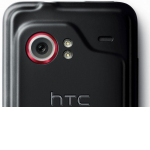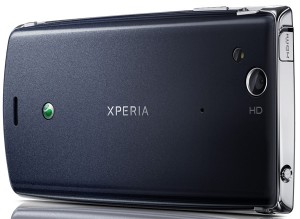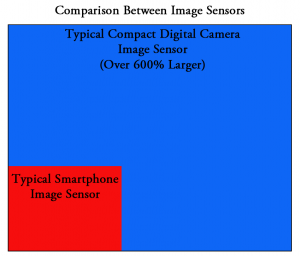Can a Smartphone Compete with a Compact Digital Camera?
 Smartphones these days do a little bit of everything, but that’s the catch; it’s only a little bit of everything. Many people think that because their smartphone has an 8 megapixel camera and can shoot 1080p HD video (like the HTC Sensation 4G), they have no need for a compact digital camera. Unfortunately, smartphones have small image sensors and lack key features to make them suitable for any serious photography.
Smartphones these days do a little bit of everything, but that’s the catch; it’s only a little bit of everything. Many people think that because their smartphone has an 8 megapixel camera and can shoot 1080p HD video (like the HTC Sensation 4G), they have no need for a compact digital camera. Unfortunately, smartphones have small image sensors and lack key features to make them suitable for any serious photography.
The Problem With Smartphone Cameras
It all comes down to size. A smartphone has to be pocketable, and there’s just not enough room for a large screen, high-end processor, cellular antennas, speakers, PLUS a full-sized image sensor. As a result, cameras on smartphones use very small image sensors. They may still allow for 8 megapixel images (or even as much as 16 megapixels with upcoming technology), but the small sensor means each little pixels sees less light, causing colors to be less accurate and images to be grainy and noisy.
Smartphone’s also have small lenses which don’t typically offer things like optical zooming. Small lenses let in less light and have a more difficult time focusing quickly. They also lack key features that help produce quality photos, such as image stabilization, shooting modes, shutter speed/aperture control, and multi-point focusing, all of which are fairly standard on most compact digital cameras today.
Ultimately, this all means that smartphone cameras perform especially poorly in low light situations, and even in ideal lighting conditions, a smartphone will struggle to take any photos that will stand up to the test of looking good in print (even a simple 4×6-inch glossy).
So When is a Smartphone Camera Useful?
Thanks to the wonderful world of the internet, printing photos is almost entirely unnecessary these days, and the great thing about a smartphone is that it’s connected to the internet no matter where you are. So when you have a photo opportunity that you’d like to share on Twitter or Facebook (places where the images will rarely be viewed at full-size), a smartphone offers more than enough quality, and includes the added benefit of being able to share it from anywhere.
 Certain smartphones do try a bit harder. Some new Sony Ericsson phones, like the Xperia Arc, feature Sony’s Exmor R image sensor, which has features that allow it to perform much better in low light situations; however, it’s still considerably smaller than your typical compact digital camera image sensor.
Certain smartphones do try a bit harder. Some new Sony Ericsson phones, like the Xperia Arc, feature Sony’s Exmor R image sensor, which has features that allow it to perform much better in low light situations; however, it’s still considerably smaller than your typical compact digital camera image sensor.
Still, you probably won’t want to rely on your smartphone for any important/memorable occasions, like a family vacation or wedding for example.
In the end, you’re really best off buying an entry level compact digital camera to complement your smartphone in situations where it just isn’t smart enough.



